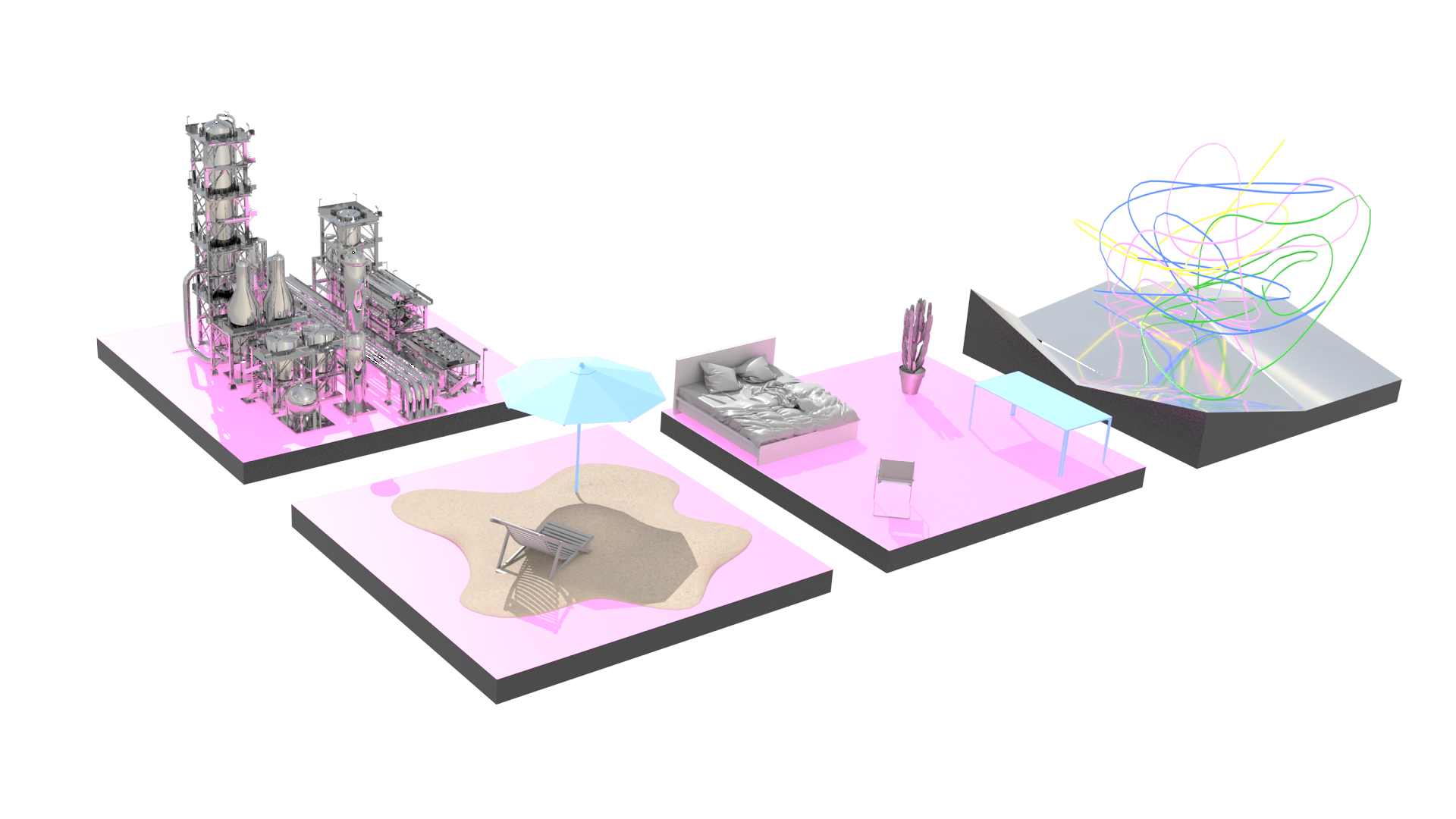You're already there – could be the claim of a mobility company presented in this thought experiment. Imagine a city built entirely on mobile platforms. The platforms predict where city dwellers want to be next and optimize their position in response — constantly moving around. When people decide to leave for their next stop, the destination platform will already wait for them a step away. That is the ideal at the crossroads of logistics and autonomous mobility. Would it be possible?
Of course not—every now and then, too many people head for the same destination. There would have to be compromises and prioritizations. As soon as not everyone has equal claims, society is divided into the privileged and the disadvantaged. So what are the good neighbourhoods in this city? What do people adorn themselves with? How does discrimination occur? And what does one stand up for?

The Elimination of Travel Time
If you look at current concept studies of design companies and car manufacturers, a big question of autonomous mobility seems to be what to do with the time gained when you no longer have to steer yourself. Seats swivel, walls turn into screens for displaying information and entertainment (Mercedes), or the vehicle transforms into an office, meeting room (Ideo) or shoe store (Toyota). Ideally, autonomous mobility will allow you to do what you want anyway while on your way. Say goodbye to useless waiting time.
The Logistics Template
Another field related to personal mobility is much further ahead with the abolition of waiting times — logistics. For example, Amazon's "predictive shipping" patent aims to get goods as close as possible to where they're likely to be ordered, so they're almost there when people actually do order them. To be able to do that, you have to know a thing or two about what people desire, not necessarily about the deeper ones, just what makes them click. Put that together with the urge to eliminate unused travel time, and you get a city built on moving platforms.
The Purpose of Thought Experiments
Thought experiments only consider a narrow set of factors and develop their possible interplay while neglecting others, even if these are extremely important in real-world situations. Mobile Parts does not consider the terrain or the outrageous energy demands a mobilized city would create. However, this selectivity is precisely the strength of thought experiments because they allow us to work out certain contexts that tend to fall by the wayside in the real world for practical reasons or common sense. This is not to say that the seeds of these contexts are not already planted in the present. We just don't allow ourselves to think far enough to recognize them. Thought experiments let us contemplate possible extreme ends of developments. That way, it becomes possible to recognize early signals pointing towards them.